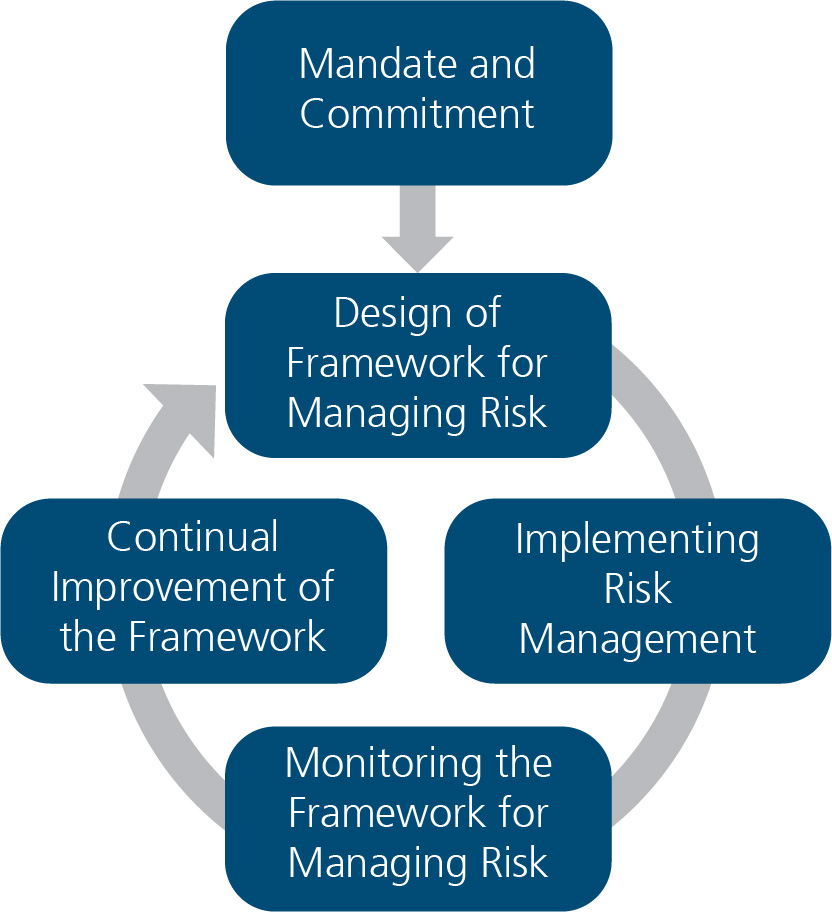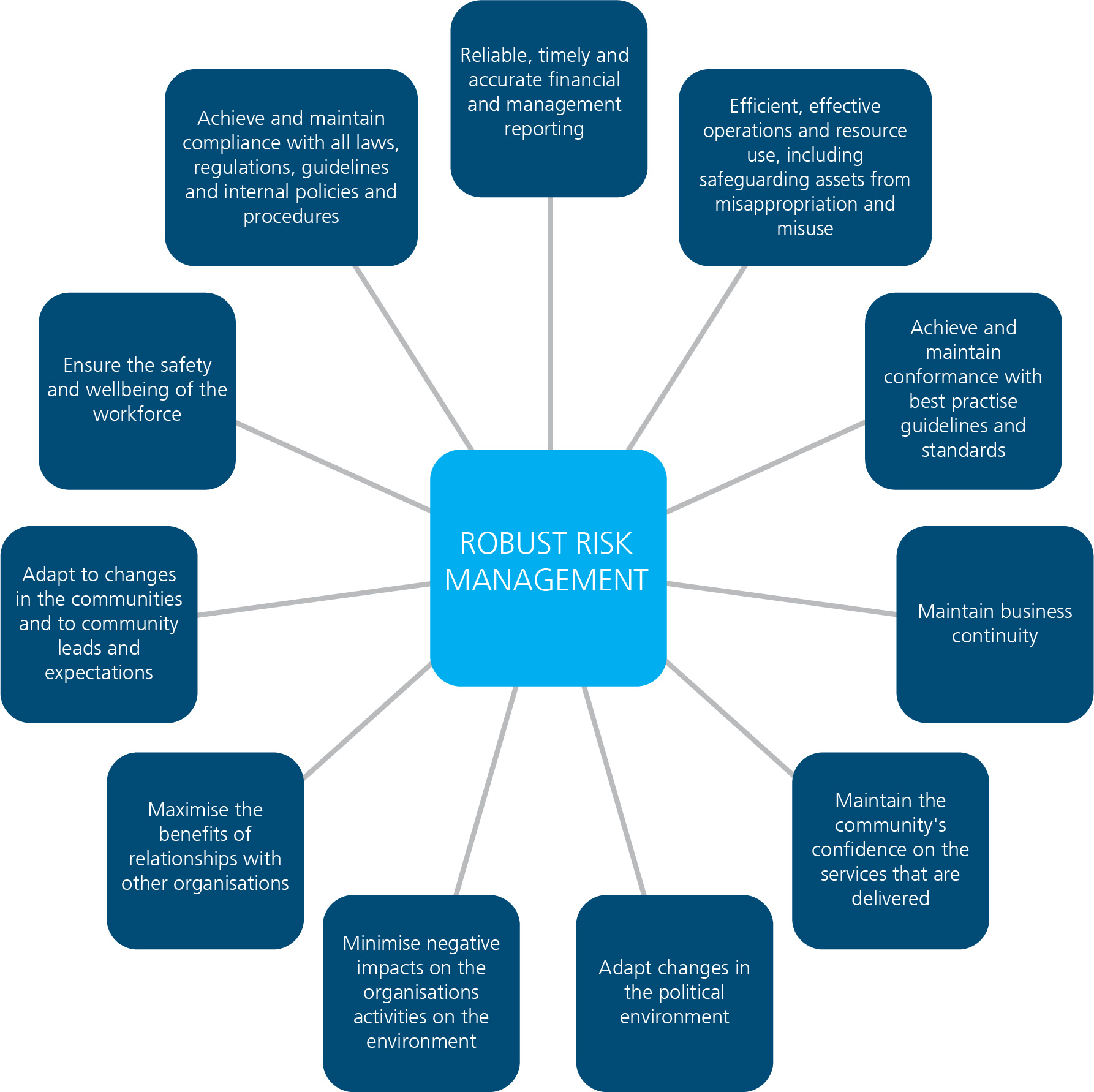Scope
This Guideline provides practical guidance for owners or operators of an aquatic facilities on how to manage the risks within an aquatic environment.
It includes information on Risk Frameworks, Risk Assessment and managing risks within the aquatic environment.
This National Industry Guideline applies to all Hotels, Motels, Camping and Caravan Grounds, Commercial and Public Aquatic Facilities, Learn to Swim Schools, and Body Corporate who own or manage an aquatic facility for the purpose of swimming or recreation such as a pool or waterslide. It may be used for Public Waterways such as Rivers, Creeks, and Streams.
This Guidelines have been developed by Royal Life Saving Society Australia under the National Aquatic Industry Committee for adoption by the Commonwealth, state and territory governments and owners and operators of aquatic facilities.
What is Risk and Risk Management?
Risk is defined in ISO Guide 73 as the ‘effect of uncertainty2 on objectives, where an effect is the deviation from what is expected’. In other words, risk is the potential for either a positive or negative deviation from the objective(s) your organisation expects to achieve. Risk is often expressed in terms of an event’s consequences and the likelihood of its occurrence.
Risk is inevitable and all Organisations must take action to manage it. Risk management encompasses all organisational objectives and should address all uncertainties, both negative (threats) and positive (opportunities).
Organisational objectives cover the full range of activities undertaken by an organisation and include:
- strategic – high-level objectives aligned with the organisation’s mission
- operational – effective and efficient use of resources, including safeguarding assets from misappropriation or misuse and the mitigation of hazards
- reporting – ensuring the reliability and timeliness of financial and management information
- compliance – adherence to internal policies and procedures, and laws and regulations
- projects – ensuring project objectives are met.
What is Aquatic Risk Management and why is it important?
ISO Guide 73 defines risk management as ‘coordinated activities to direct and control an organisation with regard to risk’. Risk management should occur in a systematic, transparent and disciplined way that will contribute to your organisations success in delivering its stated purpose.
Aquatic Risk management:
- provides a framework for addressing risks at an aquatic facility in methodical and consistent ways
- creates an environment where informed decisions about your organisations aquatic risks are made in an open and transparent way
- gives you confidence you can reduce uncertainty in achieving your objectives by effectively managing threats to an acceptable/tolerable level and; making informed decisions about exploiting opportunities, where they exist.
Risk Management Principles
A number of principles underpin and support effective risk management. These principles are articulated in AS/NZS ISO 31000:2018 and are consistent with those found in these guidelines. In applying risk assessment methodology, governments, organisations and communities are to remain cognisant of these fundamentals and must ensure that risk management:
- Creates and protects value.
- Integrates into all organisational processes.
- Informs decision-making.
- Explicitly addresses uncertainty.
- Is systematic, structured, and timely.
- Is based on best available information.
- Is tailored
- Considers and takes account of human and
- Cultural factors.
- Is transparent and inclusive.
- Is dynamic, iterative and responsive to change.
- Facilitates continual improvement.
Risk Management Framework
ISO Guide 73 defines a risk management framework as a set of components that provide the foundations and organisational arrangements for designing, implementing and monitoring, reviewing and continually improving risk management throughout an organisation.
The purpose of a risk management framework is to embed risk management throughout your organisation and provide a structure that facilitates the use of a consistent process to manage risk whenever decisions are made.
Figure 2.1 outlines the components that comprise the risk management framework as described in ISO 31000. These components need to be active in your organisations wider management system and be regularly maintained if risk management is to be effective.

Benefits of a Robust Aquatic Risk Management Framework
By adopting a formal risk management framework, you can help ensure that risks to your organisations objectives are identified and managed effectively, efficiently and coherently.
A formal risk management framework will, among other things:
- Provide the Head of Authority and other officers in your organisation with knowledge of the risks inherent in your organisations operations, and an understanding of the process used to manage those risks
- Identify who will ‘own’ the risk
- Allow you to monitor how effective your organisation is at responding to risk
- Provide stakeholders with increased confidence in your organisations governance and ability to achieve its objectives.
The benefits of a robust risk management framework are described in ISO 31000. Some of these benefits are presented in Figure 2.0
A risk management framework helps you make more informed decisions. However, management systems are not fail-proof. The owner or operator of an aquatic facility needs to be aware that human error can occur, internal controls can be circumvented through collusion, and management can override
decisions. This means no risk management framework can provide absolute assurance that your organisation can achieve its objectives.

RLSSA ACCEPTANCE AND RELEASE NOTICE
This document is a managed document. For identification of amendments, each document contains an issue date, number and a page number. Changes will only be issued as a complete replacement document. Recipients should remove superseded versions from circulation.
Authorisation:
| Name, Title | Date | |
|---|---|---|
| Prepared By: | Craig Roberts | 8th June 2016 |
| Endorsed By: | National Aquatic industry Committee | 19th September 2017 |
Amendments in this Release:
| Section Title | No# | Amendment Summary |
|---|---|---|
| This is the first release of this document | This Guideline in its entirety replaces the following:
BC2 Aquatic Risk Management (Guidelines for Water Safety in Body Corporate Pools Issue 1, January 2007 |
ACKNOWLEDGEMENTS
The production of this section of the Guidelines for Safe Pool Operations has been made possible by the significant contributions by the following organisations:
Royal Life Saving Australia and its State/Territory Member Organisations | YMCA | Belgravia Leisure | Australian Leisure Facilities Association | Leisure Institute of WA | Aquatic Recreation Institute | AustSwim | Australian Swimming Teachers and Coaches Association | Safe Work Australia | Brisbane City Council | Club Group
ACKNOWLEDGEMENT OF COUNTRY
In the spirit of reconciliation, Royal Life Saving Society Australia acknowledges the Traditional Custodians of Country throughout Australia and recognises their continued connection to land, waters and communities. We pay our respects to Aboriginal and Torres Strait Islander cultures; Elders past, present and emerging.
